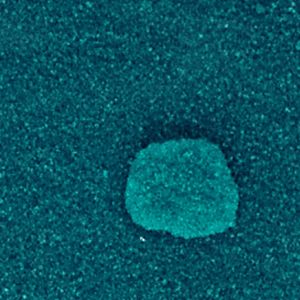How Verdigris is made:
| Artificial variety of pigment | Especially prepared in wine-growing areas, because acetic acid is a by-product of winemaking. Copper plates are covered with winemarc and allowed to stand, the resulting acetic acid reacts with the copper, forming a blue to blue-green crust which is scraped off and ground. Many historical recipes for its manufacture can be found, as the one by Pliny who described exposing copper to the vapours of fermenting grapes or in closed casks over vinegar. |
| In the lab | |
| Materials needed: | Copper(II) sulfate (CuSO4 · 5 H2O), ammonia (NH3, 25%), sodium hydroxide (NaOH), acetic acid 100% (CH3COOH) |
| Safety (MSDSs): | Copper(II) sulfate, ammonia ( 25%), sodium hydroxide, acetic acid (at Fisher Scientific) |
| Method: | The synthesis is done in three steps: 4 CuSO4 + 6 NH4OH --> CuSO4 · 3 Cu(OH)2 + 3 (NH4)2SO4 8,3 g CuSO4 · 5 H2O are solved in 100 ml deionized water and heated to 60 to 80°C. This solution is stirred vigorously while 25% solution of ammonia in water is added dropwise. First precipitate of basic copper sulfate of light blue colour is formed. The addition of ammonia solution is continued until the deep blue colour of the [Cu(NH3)4]2+ complex can clearly be seen (c. 3,6 to 4 ml of ammonia). The mixture is diluted with deionized water to a total volume of 130 ml and stirred for half an hour. After this time the precipitate is let to settle down, washed two times with deionized water, decanted and filtered off and washed again with 300 ml deionized water. CuSO4 · 3 Cu(OH)2 + 2 NaOH --> 4 Cu(OH)2 + Na2SO4 The damp precipitate is added to 130 ml of deionized water and stirred vigorously while a solution of 1,33 g sodium hydroxide in 16,7 ml deionized water is poured in rapidly. The resulting precipitate of copper hydroxide, which is rather voluminous and might not settle down easily, is washed five times with deionized water, filtered off, pressed with filter paper until dry and used for the next step as soon as possible. Cu(OH)2 + 2 CH3COOH --> Cu(CH3COO)2 · H2O + H2O The precipitate from the previous step is first mixed with 13 ml glacial acetic acid and the resulting thin paste is stirred until it is fully homogeneous. The conversion takes between one to one and half hours, during which time the temperature rises to approximatelly 50°C due to the exothermic reaction. Small amount of glacial acetic acid can be added towards the end of the reaction. The green precipitate is filtered off and dried without washing. |
The ground pigment:
Pile of ground Verdigris

Other greens
(intro) - Cobalt green - Copper resinate - Emerald green - Green earth - Malachite - Verdigris - Viridian
(intro) - Cobalt green - Copper resinate - Emerald green - Green earth - Malachite - Verdigris - Viridian

